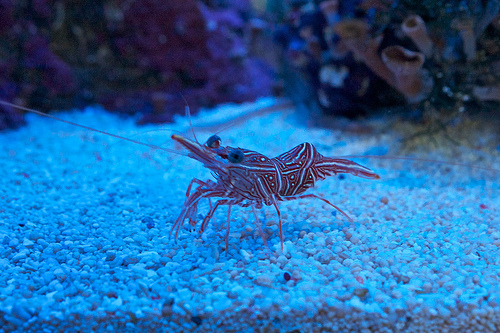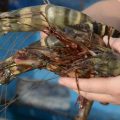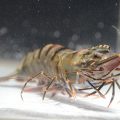The University of Santo Tomas (UST) developed a loop-mediated isothermal amplification (LAMP) based detection of shrimp pathogens, particularly the white spot syndrome virus (WSSV) and Vibrio spp. The LAMP is a practical alternative to the conventional polymerase chain reaction (PCR) and standard microbiological techniques which require equipment that are expensive.

The technology is funded by the Department of Science and Technology (DOST) under the Philippine Shrimp Pathogenomics Program.
WSSV is the most prevalent viral disease in the shrimp industry, contributing to huge economic losses. The virus was first observed in the early 1990s in Taiwan and began to spread across Asia. Meanwhile, Vibriosis caused by Vibrio spp. is the main bacterial disease of shrimps. Due to the inaccessibility of disease diagnostics to most shrimp farmers, shrimp disease outbreaks in the country remain uncontrollable. The LAMP technology has shown great potential to be adapted in Philippine shrimp farms, as it is cost-effective, convenient, and more practical than other methods of detection.
Compared with the conventional PCR, LAMP-based detection of shrimp pathogens is 10 times highly sensitive. Meanwhile, bacterial identification of Vibrio spp. consumed less time than the traditional microbiological method. The LAMP-based detection is aided by a heat block apparatus, which replaces the expensive thermal cycler, further lessening the equipment cost.
LAMP reaction is carried out at 55 to 68 degrees Celsius for WSSV detection and 59 to 67 degrees Celsius for Vibrio spp. for 45 to 60 minutes.
LAMP was able to detect WSSV from L. vannamei collected from Leyte, Batangas, Iloilo, and Bulacan, while samples from Laoag City and Ilocos Sur yielded negative results. Shrimp samples from Bolinao, Pangasinan were tested positive for Vibrio spp.
The technology can be further optimized by using a constructed heat block apparatus that will be feasible for onsite application. Furthermore, a technique for visualization of the products in a close-tube setup can be proposed to prevent cross contamination on LAMP products.
LAMP-based detection of shrimp pathogens is one of the many initiatives of the Philippine Council for Agriculture, Aquatic and Natural Resources Research and Development of the DOST (DOST-PCAARRD) in connection with Outcome One.
Outcome One seeks to provide science-based know-how and tools that will enable the agricultural sector to raise productivity to world-class standards.
LAMP-based detection of shrimp pathogens is one of the featured technologies during this year’s National Biotechnology Week (NBW) that is scheduled from November 23 to 28 at SM Dasmariñas, Cavite. DOST-PCAARRD showcases this technology in its booth for the six-day event.
NBW 2015 has the theme, Bioteknolohiya: Kaagapay ng Mamamayan sa Pambansang Kaunlaran. It also has the slogan, Angat Tayo sa Bioteknolohiya!
NBW is an annual celebration which kicked off in 2005 and was institutionalized in 2007 by virtue of Presidential Proclamation 1414. The event serves as a venue for government agencies, academic communities, and private institutions to create awareness about the role of biotechnology in food production and security.
by Rose Anne K. Mananghaya, DOST-PCAARRD S&T Media Service






